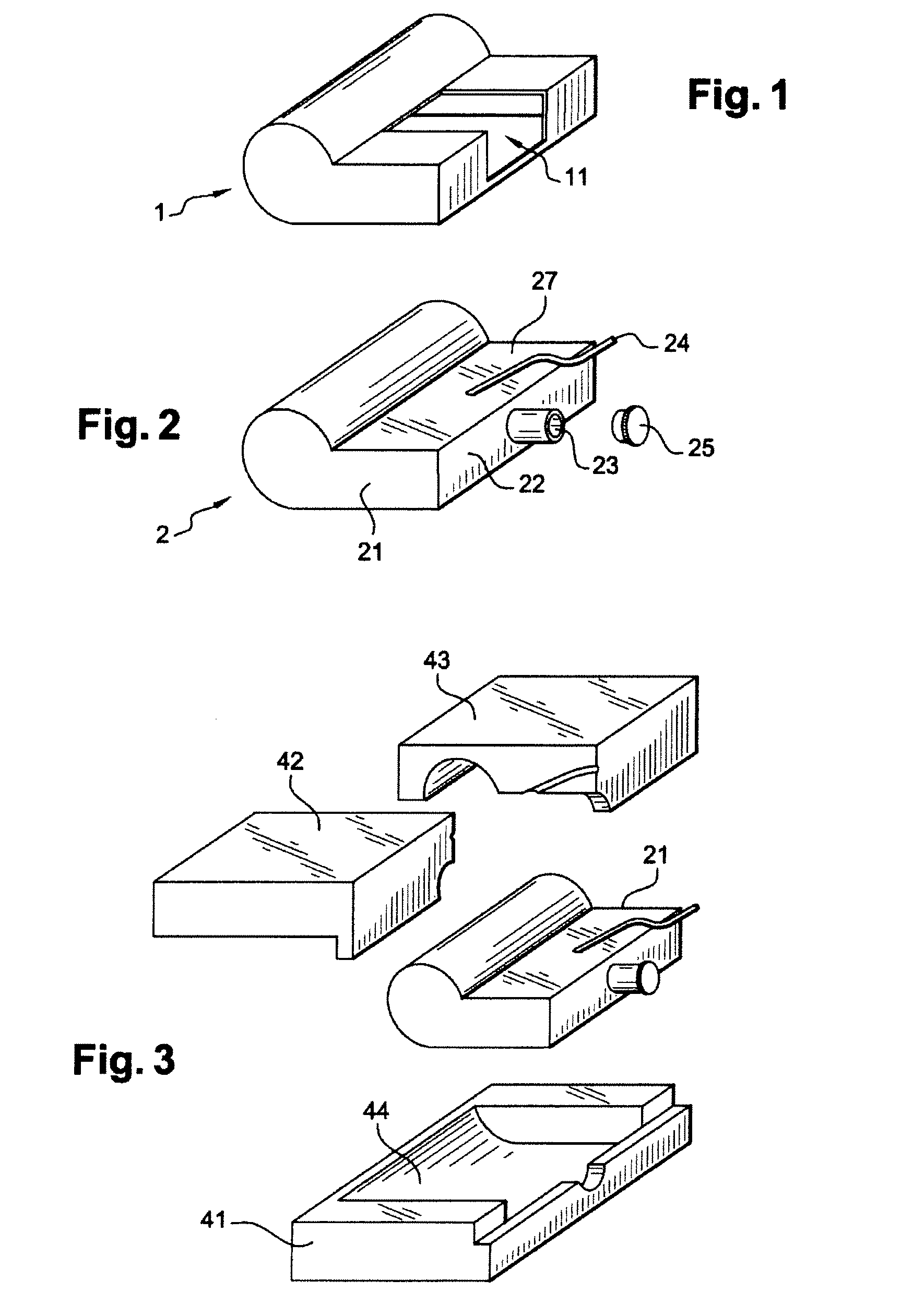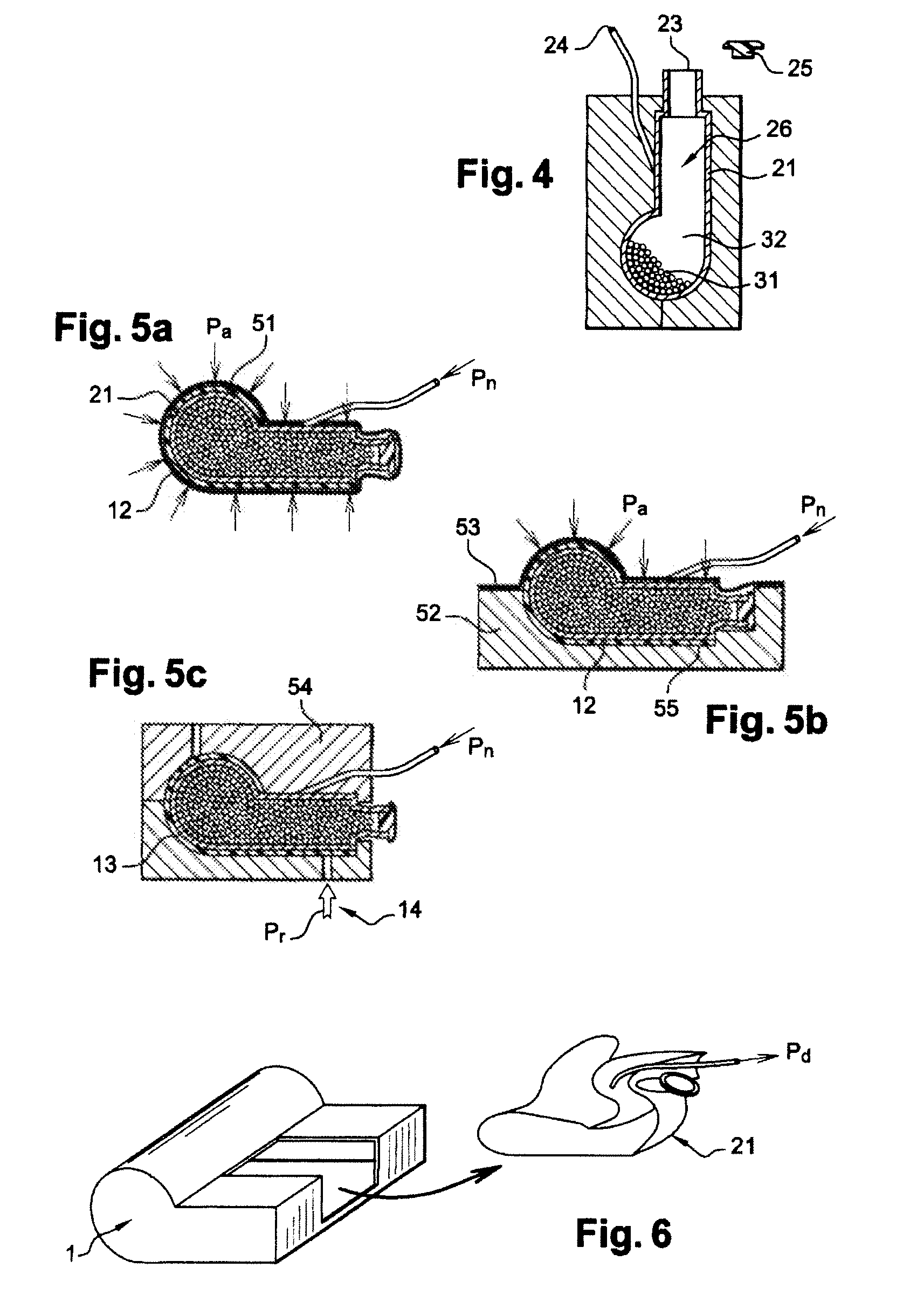Method for producing structures of complex shapes of composite materials
a composite material and complex shape technology, applied in the direction of valve details, slide valves, lamination, etc., can solve the problems of complex shape parts, inability to produce cores made of several components in practice, and inability to meet the requirements of use, so as to achieve good material soundness and better control of dimensions
- Summary
- Abstract
- Description
- Claims
- Application Information
AI Technical Summary
Benefits of technology
Problems solved by technology
Method used
Image
Examples
first embodiment
[0050]In the process according to the aspects of the disclosed embodiments, when the various parts of the mold and the fibers 12, 13 have been positioned and where appropriate the resin 14 injected, the pressure Pn in the core 2 is increased so that the pressure Pa exerted by the other means of the mold when these means are means that have a certain flexibility, for example a bladder 51, 53 as illustrated in FIGS. 5a and 5b or an elastomeric counterform (not shown), in particular those located on the face of the part opposite the face in contact with the core, or balanced.
second embodiment
[0051]In the process according to the aspects of the disclosed embodiments, when the various parts of the mold 52, 54 and the fibers 12, 13 have been positioned and where appropriate the resin 14 injected, the pressure Pn in the core 2 is increased so that the core compresses the composite 12, 13 against the walls of the mold 52, 54 when this is a mold having rigid walls. In particular, when the part is produced according to a resin transfer process as illustrated in FIG. 5c, after injecting the resin 14 until the fibers 13 are completely impregnated and feeding at a vacuum level Pr, the openings for injecting the resin 14 are closed and the pressure Pn is increased in the bladder of the core to a value greater than or equal to the pressure value Pr in order to compact the composite and homogenize the pressure.
[0052]By this process, on the one hand a better pressurization of the fiber 12, 13 comprising the resin is ensured which has the effect of greatly reducing the risk of the pre...
PUM
| Property | Measurement | Unit |
|---|---|---|
| Thermal expansion coefficient | aaaaa | aaaaa |
| Temperature | aaaaa | aaaaa |
| Pressure | aaaaa | aaaaa |
Abstract
Description
Claims
Application Information
 Login to View More
Login to View More - R&D
- Intellectual Property
- Life Sciences
- Materials
- Tech Scout
- Unparalleled Data Quality
- Higher Quality Content
- 60% Fewer Hallucinations
Browse by: Latest US Patents, China's latest patents, Technical Efficacy Thesaurus, Application Domain, Technology Topic, Popular Technical Reports.
© 2025 PatSnap. All rights reserved.Legal|Privacy policy|Modern Slavery Act Transparency Statement|Sitemap|About US| Contact US: help@patsnap.com



